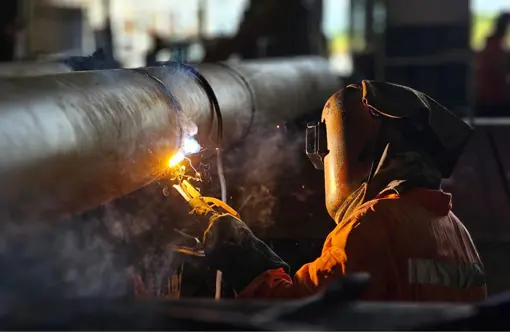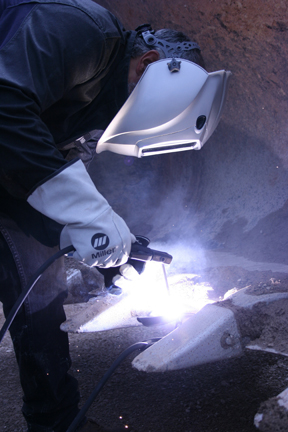Common Welding Fixing Issues and How to Address Them Successfully
Welding fixings usually encounter a series of problems that can threaten the integrity of the last item. Common issues consist of poor infiltration, porosity, and imbalance, to name a few. Each issue offers one-of-a-kind challenges that require specific techniques for resolution. Comprehending these problems is vital for welders intending to improve their skills and outcomes. This discussion will discover these typical welding fixing problems and effective approaches to address them.
Inadequate Penetration
Poor penetration takes place when the weld steel fails to completely fuse with the base product, causing weak joints and potential structural failings. This problem commonly originates from not enough heat input, inaccurate electrode angle, or improper welding speed. Welders might come across insufficient penetration because of a miscalculation of the needed parameters for a details product thickness or kind. In addition, contamination on the base material's surface can hinder effective bonding, intensifying the issue. To deal with poor penetration, welders must assure ideal setups on their tools and maintain a tidy job surface area. Regular inspection of welds is suggested to identify any type of deficiencies early, enabling timely corrections and the avoidance of compromised structural integrity in welded settings up.
Porosity
Porosity is a typical issue in welded joints that shows up as small gas bubbles caught within the weld metal. This flaw can endanger the honesty of the weld, causing decreased strength and prospective failing under tension. Montana Mobile Welding and Repair Fabrication. Porosity normally emerges from contamination, dampness, or inappropriate welding methods, which enable gases to get away into the molten weld pool. To deal with porosity, welders ought to assure correct surface prep work, keep a clean workplace, and use suitable welding criteria. In addition, selecting the ideal filler material and securing gas can mitigate gas entrapment. Routine examination and screening of welds can help identify porosity early, ensuring prompt rehabilitative actions are taken, thus preserving the high quality and reliability of the bonded framework
Imbalance
Imbalance in welding can occur from different aspects, including incorrect configuration and thermal development. Understanding the root causes is crucial for efficient resolution. Numerous correction techniques are offered to straighten components and assure architectural honesty.
Sources of Misalignment
Welding misalignment usually originates from a range of underlying problems that can jeopardize structural integrity. One key reason is incorrect fit-up of components prior to welding, which can result in voids and irregular surface areas. Variations in thermal expansion during the welding process can likewise cause distortion, specifically if the materials being signed up with have different coefficients of growth. Additionally, inadequate securing and fixturing might fall short to hold components securely in position, bring about movement during welding. Inadequately maintained devices, consisting of welding makers and devices, may introduce inconsistencies in the weld grain, additional adding to imbalance. Driver mistake, stemming from inadequate training or experience, can likewise play a considerable function in producing misaligned welds.

Adjustment Techniques Available
Dealing with misalignment properly needs a mix of restorative methods customized to the particular issues available. One typical approach is the use of components or jigs to hold components in the correct setting during welding, making sure consistent positioning. Additionally, preheating the materials can help in reducing distortion and boost fit-up. For substantial imbalance, mechanical realignment methods, such as using hydraulic jacks or clamps, can be utilized to deal with the position prior to welding. Post-weld warm therapy might also be required to alleviate stresses brought on by misalignment. Ultimately, mindful assessment and change throughout the configuration phase can stop imbalance problems from coming to be considerable problems, advertising a smoother welding process and improving general architectural integrity.
Distortion
Distortion is a typical challenge in welding that can develop from numerous aspects, consisting of irregular home heating and air conditioning. Recognizing the causes of distortion is essential for applying reliable prevention techniques. Resolving this problem not just improves structural integrity yet additionally enhances the total quality of the weld.
Reasons for Distortion
When based on the extreme warm of welding, products commonly undergo modifications that can lead to distortion. This sensation mainly develops from thermal expansion and contraction throughout the welding procedure. As the weld location warms up, the product expands; upon cooling, it acquires, which can create inner tensions. Furthermore, uneven home heating throughout a work surface can intensify these tensions, causing warping or bending. The type of product also plays a considerable function; steels with varying thermal conductivity and coefficients of growth might react in a different way, bring about uncertain distortions. Inadequate joint style and inadequate fixturing can add to imbalance during welding, boosting the possibility of distortion. Recognizing these reasons is necessary for reliable welding repair work and prevention methods.
Prevention Techniques
Effective avoidance techniques for distortion throughout welding concentrate on managing warm input and making sure appropriate joint design. Maintaining a regular warm input helps to minimize thermal development and tightening, which can bring about distortion. Utilizing techniques such as preheating the work surface can additionally reduce the temperature gradient, promoting uniform heating. Additionally, picking appropriate joint layouts, such as T-joints or lap joints, can enhance security and decrease tension focus. Executing correct fixturing to safeguard the work surfaces in position even more aids in preserving positioning during the welding procedure. Staggered welding sequences can disperse warmth extra equally, preventing localized distortion. By using these techniques, welders can substantially decrease the possibility of distortion and improve the general top quality of their welds.
Cracking
Fracturing is go now a common concern come across in welding repair services, usually arising from numerous elements such as incorrect cooling rates, material selection, or inadequate joint preparation. The event of cracks can significantly compromise the honesty of the weld, resulting in potential failings during operation. To resolve this issue, welders should first evaluate the origin, guaranteeing that products are compatible and suitably selected for the certain application. In addition, regulating the cooling rate during the welding procedure is essential; quick cooling can cause anxiety and cause fracturing. Appropriate joint design and prep work also add to reducing the danger. Implementing these techniques can boost weld high quality and toughness, inevitably reducing the chance of breaking in finished weldments.

Insufficient Fusion
A considerable issue in welding repairs is insufficient fusion, which takes place when the weld steel does not sufficiently bond with the base material or previous weld passes - Belgrade Fabrication. This problem can bring about weak points in the joint, potentially endangering the integrity of the welded framework. Variables adding to insufficient combination consist of not enough warm input, incorrect welding method, and contamination of the surfaces being signed up with. To resolve this issue efficiently, welders should ensure appropriate pre-weld cleansing and surface area prep work, along with readjust their welding parameters to attain ample infiltration and fusion. Normal examination during the welding procedure can likewise help recognize insufficient fusion early, enabling timely rehabilitative measures to enhance the overall top quality of the weld
Overheating
While welding repair services can boost structural integrity, overheating presents a considerable challenge that can result in product degradation. Too much warm during welding can modify the mechanical residential or commercial properties of steels, causing reduced toughness, raised brittleness, and warping. This phenomenon is particularly important in high-stress applications where architectural reliability is critical. Identifying getting too hot can involve aesthetic inspections for discoloration or distortion, as well as keeping an eye on temperature level throughout the welding process. To mitigate the dangers connected with getting too hot, welders ought to employ appropriate methods, such as managing warmth input, readjusting travel rate, and making use of ideal filler materials. In addition, executing pre- and post-weld warm treatments can help restore material buildings and boost the general quality of the repair, guaranteeing lasting efficiency and safety.
Regularly Asked Concerns
What Are the Usual Indications of a Welding Defect?

Just How Can I Test My Welds for High quality?
To examine welds for top quality, one can utilize visual examinations, ultrasonic screening, and radiographic approaches. Each method assures architectural integrity, determines problems, and verifies adherence to defined requirements, ultimately boosting the integrity of the bonded joints.
What Security Preventative Measures Should I Take While Welding?
When welding, one ought to prioritize security argon near me by putting on proper individual safety devices, making certain appropriate ventilation, securing combustible materials away, maintaining a tidy work space, and knowing environments to avoid accidents and injuries.
Can I Repair a Weld Without Remodeling the Entire Joint?
Repairing a weld without remodeling the entire joint is feasible, depending on the damages (Montana Mobile Welding and Repair Fabrication). Techniques such as grinding, adding filler product, or making use of a welding process can successfully deal with certain imperfections while maintaining the surrounding structure
What Equipment Are Necessary for Efficient Welding Repairs?
Necessary devices for effective welding repair work consist of a welding maker, cord brush, grinder, safety gear, clamps, and filler products. Each device plays an essential duty in making certain quality and security during the fixing procedure. Porosity generally develops from contamination, dampness, or improper welding methods, which enable gases to run away into the molten weld pool. Poorly maintained tools, including welding devices and devices, might introduce disparities in the weld grain, more contributing to misalignment. When subjected to the intense warm of welding, materials often undergo adjustments that can lead to distortion. Cracking is a welding carts typical issue come across in welding repairs, often resulting from different elements such as incorrect cooling prices, material choice, or insufficient joint prep work. A substantial issue in welding repairs is incomplete fusion, which happens when the weld metal does not appropriately bond with the base material or previous weld passes.